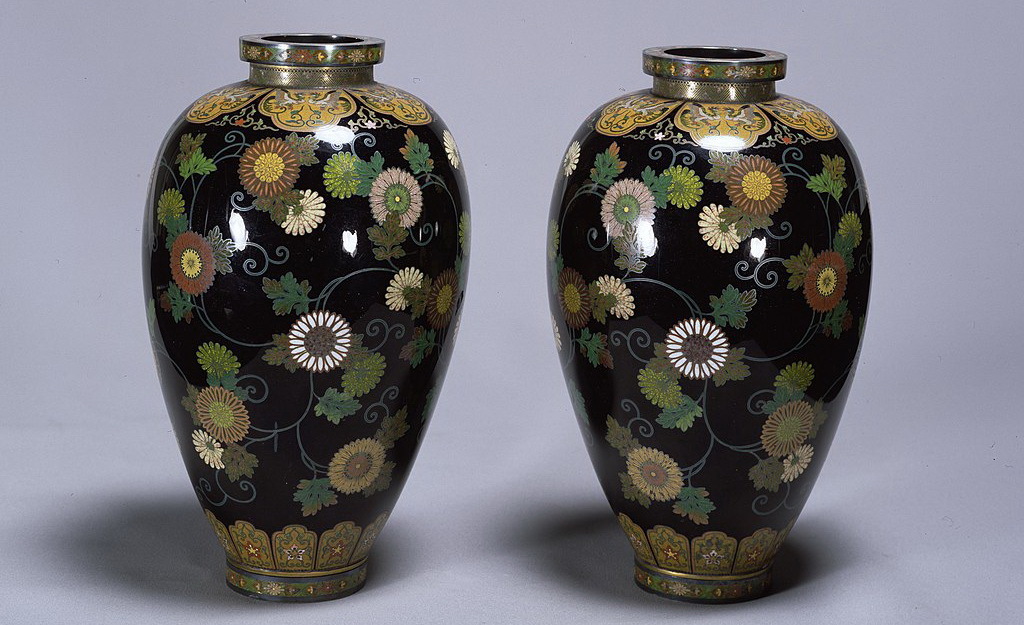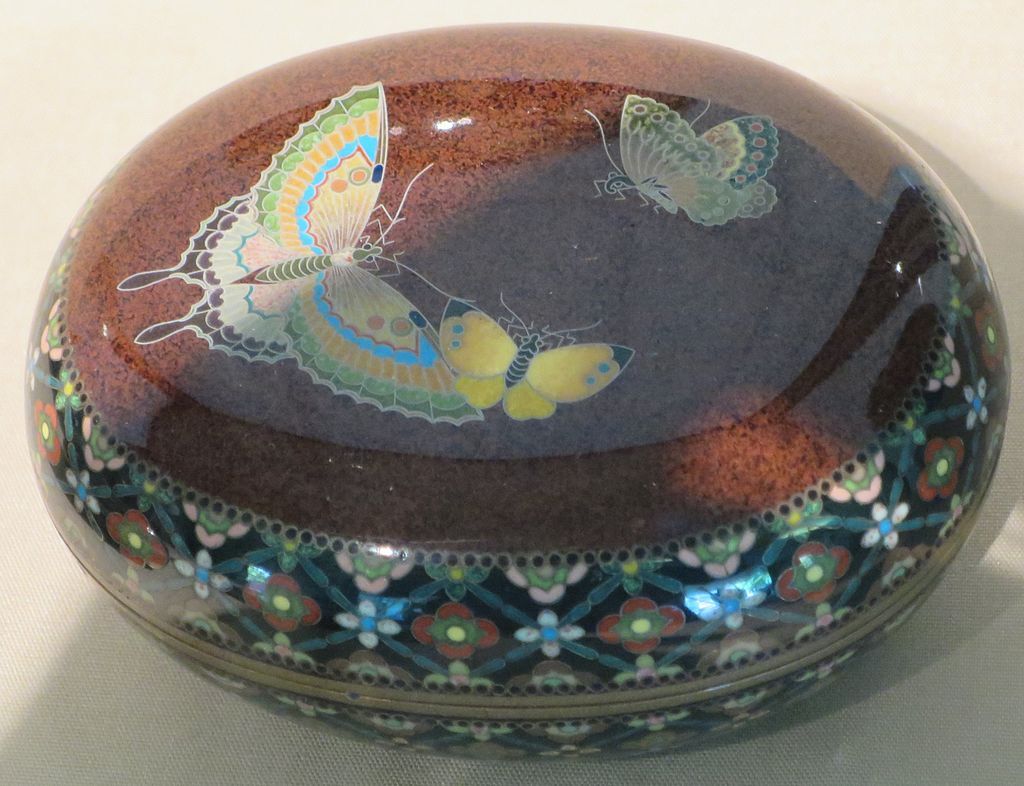Namikawa Yasuyuki, a name that echoes with brilliance in the world of Japanese cloisonné, stands as a paragon of craftsmanship and innovation. Born in 1845 in Kyoto, Yasuyuki's life journey from a samurai family to becoming a master artisan profoundly influenced the trajectory of Japanese decorative arts during the Meiji era. His works are not just artistic masterpieces but also highly coveted items in antique auctions, attracting antique buyers and collectors worldwide who seek to buy Japanese art of unparalleled quality.
Early Life and Transition to Art.
Kyoto, known for its rich cultural heritage, was the perfect backdrop for Yasuyuki's early life. Initially trained as a samurai, Yasuyuki's career path took a significant turn when he began to explore the world of art. This shift was not uncommon during the Meiji Restoration, a period marked by rapid modernization and cultural shifts. The samurai class was in decline, and many sought new vocations. For Yasuyuki, this meant channeling his discipline and precision into the meticulous craft of cloisonné.
Mastery of Cloisonné
Cloisonné, an art form involving the creation of designs with metal wires and enamel, found new life in Yasuyuki’s hands. He apprenticed under Kaji Tsunekichi, a pioneering figure in Japanese cloisonné who had learned techniques from Chinese artisans. Under Tsunekichi's mentorship, Yasuyuki mastered traditional methods and began experimenting with his own innovations.
One of Yasuyuki's significant contributions was his development of new enamel formulas and firing techniques, which allowed for greater clarity and depth of color. His ability to create intricate, lifelike designs with these materials set his work apart. Yasuyuki’s pieces often featured natural motifs such as flowers, birds, and landscapes, rendered with a level of detail and subtlety that was revolutionary.
Yasuyuki's Artistic Innovations
Yasuyuki was particularly renowned for his use of the "wireless cloisonné" (musen shippō) technique, where the wires that typically define the cloisonné cells are not visible, creating a smooth, uninterrupted surface. This method required exceptional skill and precision, highlighting Yasuyuki's technical prowess. The result was a painterly effect, with designs that seemed to float on the surface of the enamel.
His works were not only beautiful but also structurally innovative. Yasuyuki often created pieces with complex shapes and forms that challenged the traditional boundaries of cloisonné. Vases, jars, and plaques adorned with his exquisite designs became highly sought after, not just as decorative items but as valuable art pieces.
Recognition and Influence
Namikawa Yasuyuki's mastery of cloisonné earned him international acclaim. His works were exhibited at numerous expositions, where they won prestigious awards. At the 1889 Paris Exposition Universelle, Yasuyuki’s cloisonné pieces won a gold medal, cementing his reputation as one of Japan’s leading artisans. Such accolades boosted his profile among antique buyers and collectors worldwide, who recognized the exceptional quality and artistry of his work.

Chrysanthemum and ivy bottle, 1892. Source: wikipedia.org
In Japan, Yasuyuki’s cloisonné was prized by the imperial family and featured in prominent collections. His influence extended beyond his own creations as he trained a new generation of artisans, ensuring the continued evolution and refinement of Japanese cloisonné.
Antique Auctions and Collecting
Today, Namikawa Yasuyuki's works are highly prized in the antique market. Antique auctions featuring his pieces attract significant attention from collectors and antique buyers who appreciate the historical and artistic value of his work. These auctions often see fierce bidding, reflecting the high demand for Yasuyuki's cloisonné.

Cloisonné lidded box with butterfly design by Namikawa Yasuyuki, c. 1890, LACMA Source:wikipedia.org
Antique appraisal experts frequently highlight the exceptional craftsmanship and innovation in Yasuyuki’s pieces, often noting their historical significance and rarity. Collectors seeking to buy Japanese art recognize that owning a piece by Namikawa Yasuyuki is not just acquiring a beautiful object but a piece of cultural heritage.
Legacy and Enduring Appeal
Namikawa Yasuyuki's legacy is preserved in numerous prestigious collections worldwide, including the Victoria and Albert Museum in London, the Metropolitan Museum of Art in New York, and the Kyoto National Museum. These institutions showcase his works, providing the public with an opportunity to appreciate the beauty and skill of Japanese cloisonné.
The Namikawa Cloisonné Museum of Kyoto stands as a dedicated space to celebrate Yasuyuki’s life and work. The museum houses a comprehensive collection of his pieces and serves as an educational center, promoting the appreciation and understanding of cloisonné artistry.
Conclusion
Namikawa Yasuyuki’s contributions to the art of cloisonné have left an indelible mark on the world of Japanese decorative arts. His innovative techniques, exceptional craftsmanship, and artistic vision transformed cloisonné from a craft into a celebrated art form. Today, his works continue to captivate and inspire, drawing the attention of antique buyers and collectors who seek to buy Japanese art of the highest quality.
Yasuyuki’s life story, from samurai to master artisan, is a testament to the transformative power of art and the enduring legacy of true craftsmanship. As his pieces circulate in antique auctions and adorn the collections of enthusiasts worldwide, Namikawa Yasuyuki's name remains synonymous with the pinnacle of Japanese cloisonné artistry.
Cover image:
Incense Burner with Design of Birds Flying amid Trees and Flowering Plants. Alternate Title: Kōro. Namikawa Yasuyuki (1845-1927) Japan, circa 1885 Source: collections.lacma.org


